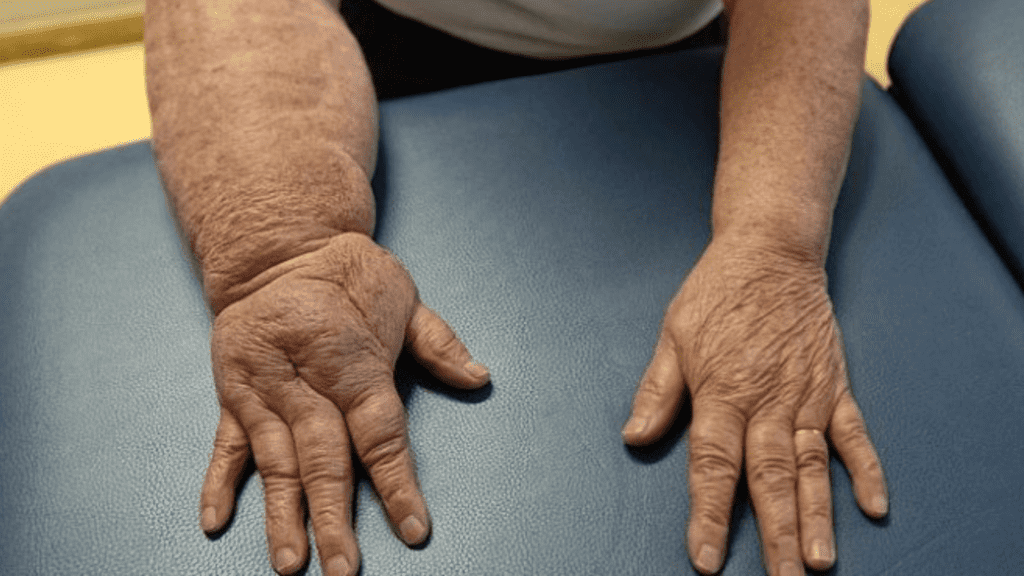Black Women Are At Risk To Develop Lymphedema
Nikki Attkisson | Last Updated : December 8, 2021Lymphedema is the result of the damage caused to the lymph system is damaged. Swelling, as a result of lymphedema, is caused by the buildup of fluid in soft body tissues.
Black Women Are At Risk To Develop Lymphedema
Usually, an arm or a leg is affected by lymphedema, but in certain cases, other parts of the body can also be affected.

For patients, long-term psychological, physical, and social issues can be caused.
Lymphedema is of 2 types: primary and secondary. Primary lymphedema is caused by the lymph system developing abnormally.
Damage to the lymph system causes secondary lymphedema. Removal of lymph nodes, which is often done during breast cancer treatment generally causes lymphedema in women.
Lymphedema is a well-known side effect of getting treatment for breast cancer. This condition involves a swelling up in the arms and legs.
It has been suggested that, when compared to white women, black women have a 3 times higher risk of experiencing this painful issue.
Dr. Andrea Barria, the lead author of the study, said that the quality of life for breast cancer patients is worsened by lymphedema.
Barrio said that the quality of life for these patients can be improved by understanding the links between the treatment, race, and the effects of treatment.
In the research arena, lymphedema has been somewhat overlooked according to Dr. Stephanie Bernik who was not involved in the study.
She said that some of the possible reasons for racial disparity have been hinted at by this study and that before surgery, women who have lymphedema are more likely to undergo chemo and radiation therapy.
She added that a known risk factor for developing lymphedema was having a higher BMI, which is more likely in Black women. She also said that genetics may also play a role and that the root causes of the problem needed to be studied more in detail.
The researchers, for the purpose of the study, used over 300 breast cancer patients’ arm volume measurements. They did this in contravention to the usual self-reported diagnosis codes or experience.
Between Nov. 2016 and March 202, the patients had gone through an axillary lymph node dissection. This is the surgical removal of lymph nodes.
The patients’ arm volume was measured at baseline right after the surgery and 6 months after the surgery. Lymphedema was defined by the study as a relative volume change of over 10% from the baseline.
About 25% of women had developed lymphedema after 24 months of follow-up. The findings showed that when compared to white women, black women had a 3.5 times increase in the risk of lymphedema.
Compared to white women, Hispanic women also had a higher risk of developing lymphedema. They had 3 times higher risk.
The authors of the study noted that in order to confirm the findings, further study would be required as the Hispanic population in the study was small.
A difference seemed to be made by the type of treatment. It was found that the likeliness of developing lymphedema was 2 times higher in women who received neoadjuvant chemo. This is when chemo is given before the surgery.
Barrio said that it has been proven that later stage breast cancer is often diagnosed in Black women. This is the reason that they are more likely to require axillary surgery that can increase the risk of lymphedema.
The strongest predictor of lymphedema was still race.
Older age and time from surgery were the other factors involved in having a higher risk of lymphedema.
Unless findings are published in a peer-reviewed journal, they must be considered preliminary.
With over 15 years as a practicing journalist, Nikki Attkisson found herself at Powdersville Post now after working at several other publications. She is an award-winning journalist with an entrepreneurial spirit and worked as a journalist covering technology, innovation, environmental issues, politics, health etc. Nikki Attkisson has also worked on product development, content strategy, and editorial management for numerous media companies. She began her career at local news stations and worked as a reporter in national newspapers.
